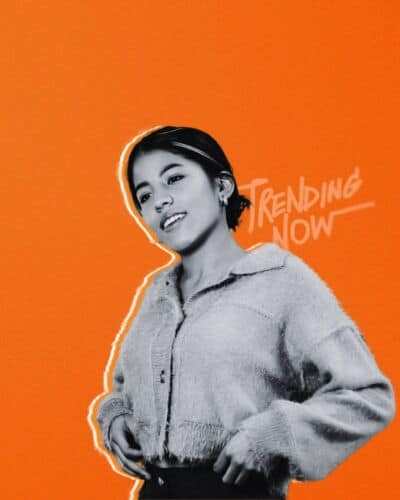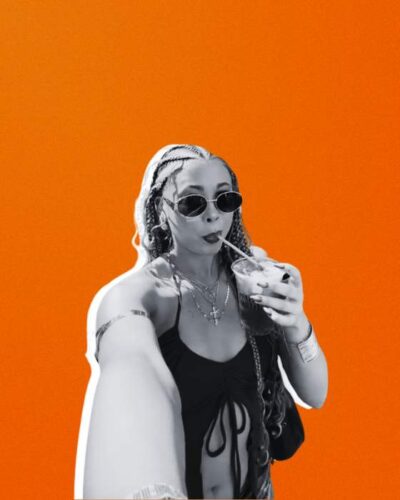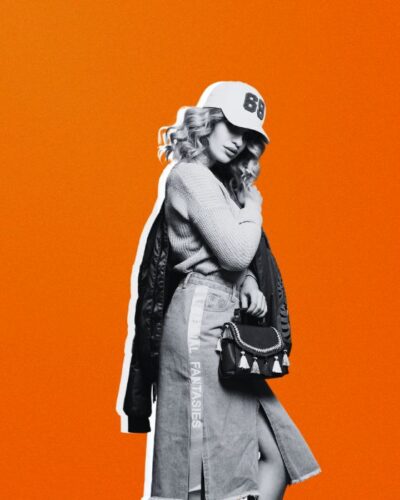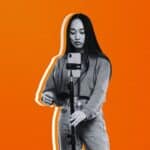The Super Bowl has always been a platform for big-budget, flashy advertisements, but in recent years, a shift has begun. With the rise of creators, social media influencers, and user-generated content, brands are turning to more authentic, relatable approaches to capture the attention of their audiences.
This year, campaigns like Gatorade’s creator-led trials, Doritos’ user-driven “Crash the Super Bowl,” and Nike’s empowering female athlete commercial highlighted how creators and social media are not just influencing but transforming the way brands engage with consumers. As we dive into these campaigns, it’s clear that the traditional formula for Super Bowl ads is evolving, creating a new era of marketing where consumers take center stage.
How Brands Approached Super Bowl LIX Ads
Gatorade
Gatorade Super Bowl ads have a history that’s as legendary as the game itself. What began as a spontaneous, celebratory moment—the iconic Gatorade dunk over the coach—has evolved into one of the sport’s most cherished rituals. If you’ve ever watched a Super Bowl victory, you know exactly what we’re talking about: the thrilling moment when the winning team douses their coach with a cooler full of Gatorade, sealing the ultimate victory.
This deep connection with the Super Bowl made Gatorade’s creator-led campaign the perfect play in the lead-up to the big game. The brand took it to the next level by launching NFL trials, pairing content creators with pro players to see if they had what it takes to step onto the field. From @thepointerbrothers (1.9M followers) racing Detroit Lions’ Aidan Hutchinson to Adam Waheed (10.8M followers) testing his throwing skills with Justin Jefferson, and Caitlin Clark swapping courts for the field, Gatorade’s creators proved they could push their limits, all while hyping up the Super Bowl and their brand.
Gatorade deepened its connection to the sport and the excitement of the big game by collaborating with popular influencers to create NFL-style trials. By putting them through fun and physical challenges alongside professional players, Gatorade blended entertainment with its performance-driven image. The campaign not only generated hype around the Super Bowl finale but also resonated with fans by showcasing influencers pushing their limits, further reinforcing Gatorade’s association with athleticism and peak performance.
Poppi
Poppi, the prebiotic soda brand celebrated for offering a healthier twist on traditional sodas, made its return to the Super Bowl ads schedule for the second year running.
Poppi’s “Soda Thoughts” highlighted the internal struggle many consumers experience when deciding whether to indulge in a traditional soda. The ad stars creators Alix Earle, Jake Shane, and Rob Rausch from Love Island USA. It showcased five different scenarios, each featuring Poppi in a variety of everyday settings, including a girls’ night, a diner, a drive-through, a convenience store, and a pool party.
Alongside its hero ad spot, Poppi created branded vending machines, which were gifted to over 32 creators, influencers, and the wives and girlfriends (WAGs) of high-profile athletes. Now this didn’t actually go down so well, especially amongst audiences on TikTok who slammed the campaign for being “tone-deaf” – creators receiving expensive gifted items while the brand’s consumers still had to pay full price at Poppi stores.
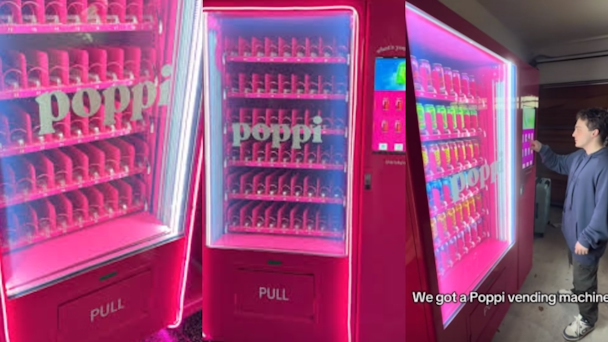
A viral TikTok video by user Isabella Lanter, which garnered nearly 2 million views, criticised the promotion as “too extravagant” and “out of touch.” Other viewers highlighted the environmental concerns of shipping and powering the machines, especially after influencers revealed they would only be keeping them for the weekend.
The bottom line here is that these stunts need to have more meaning behind them. Today’s consumers are increasingly looking for brands that align with their values and show authenticity. Flashy, influencer-driven campaigns that feel disconnected or wasteful can actually alienate audiences who are concerned about issues like environmental impact, economic fairness, and social responsibility. The biggest learning should be to consider the brand’s core mission and consumer values, extravagant stunts should tie into these values to avoid coming across as superficial.
Mountain Dew
Mountain Dew returned to the Super Bowl for the seventh time, with its Baja Blast flavor taking center stage for the second consecutive year.
This year, Mountain Dew teamed up with singers Becky G and Seal for a hilarious twist on the classic hit “Kiss from a Rose.” The 30-second Super Bowl ad, titled “Kiss from a Lime,” takes viewers on a wild ride as Becky G and Mountain Dew’s Baja Blast transport to Baja Beach after cracking open a refreshing Baja Blast. Just as they land, Seal surprises them as a real seal, serenading Becky G and Mountain Dew’s Baja Blast with his iconic vocals on the sun-soaked beach. It’s a quirky, fun-filled moment that blends music, humor, and a splash of Baja Blast magic.
This Mountain Dew Super Bowl ad is a perfect case study in how brands can blend nostalgia with fresh, modern appeal. By partnering with both Becky G, a rising star popular with younger audiences, and Seal, an iconic figure from the ’90s, Mountain Dew bridged generational gaps. The clever pairing of these two artists brought together fans from different musical eras, using humor and an unexpected twist on the classic “Kiss from a Rose” to capture attention.
For younger viewers, Becky G represents a contemporary sound and energy, while Seal’s presence adds a layer of nostalgia for older fans. This dynamic combination helped the brand engage multiple demographics, appealing to both the modern taste of today’s music scene and the timeless nostalgia that resonates with long-time fans. The humorous, offbeat storyline and the playful contrast between the two artists also showcased Mountain Dew’s fun, irreverent brand personality, making the ad memorable and impactful. “None of this makes sense… and that’s why we love it.” one user posted on Instagram.
The NFL
Each year, content creators seem to become more involved in Super Bowl ads. In 2023, there was little creator involvement, especially in advertisements. 2024 saw more of an expansion in creator-led campaigns. But this year, there was a full-scale development, with the NFL contracting over 150 creators, giving them unprecedented access to the Super Bowl.
Creators from Germany, Brazil, Mexico, and the UK came together to produce dynamic content in multiple languages, all aimed at engaging the NFL’s top international markets. One of the standout moments was a high-energy, creator-led flag football game featuring fan-favorite streamers iShowSpeed and Kai Cenat. This exciting matchup was live-streamed on YouTube the day before the Super Bowl, offering fans around the world an exclusive, action-packed preview of the big game in a way that was fresh, interactive, and globally connected.
This isn’t just another influencer marketing campaign—it’s a game-changer. The NFL’s bold use of creators marks a revolutionary shift in how one of the world’s biggest sports leagues approaches media. While other leagues are still trying to figure out social media’s role in their strategy, the NFL is already executing a forward-thinking vision that could completely transform the future of sports entertainment in the digital age.
Doritos
Doritos deserves its own hall-of-fame spot when it comes to the Super Bowl. Every year the brand appears to top its last attempt with something even more exciting.
Instead of creating its own commercial, Doritos revived its “Crash the Super Bowl” contest, challenging fans with the question, “Think you can make a better ad? Prove it.” The creators of the winning spot were awarded a $1 million prize and an all-expenses-paid trip to New Orleans for the Big Game.
From September 2024 to January 2025, Doritos spent months reviewing submissions from its fans, narrowing down the contenders for the best ad. Finally, “Abduction” debuted during the Super Bowl ad break. Created by Dylan Bradshaw and Nate Norell, the ad told the story of an alien trying to steal Doritos with a spaceship tractor beam. But a hungry Earthling wasn’t about to give up his Nacho Cheese chips. What followed was a hilarious tug-of-war that turned into an unlikely friendship, and what we saw was an entirely audience-crafted Super Bowl ad.
This campaign was a massive success because it tapped into the power of user-generated content and turned the Super Bowl ads space into a platform for fan creativity. By reviving its “Crash the Super Bowl” contest, Doritos invited its audience to be part of the magic, empowering them to create something unique and personal for the brand. This approach not only deepened the connection between the brand and its consumers but also generated excitement and anticipation leading up to the big game.
The campaign’s success lies in the fact that it puts fans at the center of the action, making them feel like active participants rather than passive viewers. “Abduction” stood out because it was a fan-crafted story that resonated with a wide audience, blending humor, nostalgia, and the beloved Doritos brand. But beyond the winning spot, there’s an abundance of creative content out there from that was submitted as part of Doritos’ campaign. Some creators have even taken this in their stride, posting BTS footage of what went into their creation.
Nike Super Bowl Ads
Nike last aired a Super Bowl ad in 1998, featuring all-male athletes. It wasn’t until 27 years later, in 2025, that Nike made another Super Bowl investment, this time spotlighting all-female athletes.
Nike’s “So Win” Super Bowl LIX commercial was a powerhouse of talent, showcasing an inspiring lineup of female athletes. The ad featured WNBA stars Caitlin Clark, Sabrina Ionesco, and A’ja Wilson, alongside rising college basketball sensation JuJu Watkins. Olympic gymnast Jordan Chiles, professional tennis player Aryna Sabalenka, and track and field icon Sha’Carri Richardson also made her mark, alongside soccer legends Alexia Putellas and USWNT star Sophia Smith Wilson.
The commercial packed an emotional punch, using Led Zeppelin’s iconic “Whole Lotta Love” to set the tone while rapper Doechii’s powerful voice echoed the societal messages women often hear, those that make them feel less than enough – also great timing from Nike following off the back of Doechii’s Grammy win. The ad was a bold celebration of female empowerment, challenging the narratives that hold women back.
This campaign was a game-changer for Nike, marking a powerful return to the Super Bowl after 27 years, and in the most impactful way possible.. Featuring a diverse lineup of top athletes from across the sports world, including WNBA stars Caitlin Clark, Sabrina Ionesco, and A’ja Wilson, as well as rising stars like JuJu Watkins and Sha’Carri Richardson, the ad made an undeniable statement about the unstoppable force of women in sports.
Although Doechii’s role in the ad was likely locked in long before her Grammy win for Rap Album of the Year, it’s clear Nike has its finger on the cultural pulse. The brand’s timing couldn’t have been more on point, leveraging Doechii’s rising star power to amplify the message of empowerment.
Nike’s bold move was about so much more than just showcasing athletic talent—it was about redefining what winning truly means. The campaign wasn’t just for athletes; it was a rallying cry for millions of women to embrace their strength, break free from expectations, and rewrite the rulebook.
Uber Eats
CeraVe hit a perfect touchdown with their Super Bowl ad in 2024. As a reminder, they played into the conspiracy theory that actor Michael Cera was the mastermind behind the skincare brand.
This year it looks like Uber Eats have taken a leaf out of the CeraVe handbook. “A Century of Cravings” featured a star-studded lineup including Matthew McConaughey, Kevin Bacon, Martha Stewart, Charli XCX and Hot Ones host Sean Evans.
Matthew McConaughey brought the wildest conspiracy theory about football’s origins to life, pitching it as the plot for a blockbuster movie. “From the very beginning, football’s been a conspiracy to make us hungry,” McConaughey quipped at the start of the clip. According to his theory, it all began in 1876 with the birth of football, and he had the “proof” to back it up. He dove into the strange food references woven into the game, like calling a football a “pigskin”. It was a hilarious, off-the-wall take on the sport that left you wondering, could there be more to this theory than meets the eye?
Key Takeaways
1. Consumers have had enough of flashy influencer-driven marketing stunts
Consumers are increasingly fed up with flashy, influencer-driven marketing, and Poppi’s Super Bowl campaign shows exactly why. Their latest activation is just one of many high-budget stunts that missed the mark.
As environmental and economic concerns take center stage on social media, audiences are calling for brands, and the creators they partner with, to ditch the excess and focus on more meaningful, authentic connections. The era of extravagant gimmicks is fading fast, and brands that fail to listen will find themselves increasingly out of touch with the very consumers they’re trying to reach.
2. Consumers as creators
There’s a rising trend of brands bringing their consumers into the spotlight, and it’s paying off big time. Doritos’ latest Super Bowl ads are a prime example, earning rave reviews and likely sparking a deeper creator-brand connection. As more brands embrace user-generated content and reward loyal customers with chances to share their stories, these “everyday influencers” are set to become a game-changing force in marketing. By empowering real people to be a brand’s voice, companies are building more authentic, lasting connections with their audiences.
3. Stay tuned into the heartbeat of culture
Nike’s Super Bowl ad will be remembered for its positive messaging around female empowerment, but the brand deserves credit for keeping tabs on the cultural zeitgeist. Be assured, they didn’t assemble this ad after Doechii won her first Grammy! They were tapped in beforehand, with a pulse on culture, and it paid dividends.
4. Are brands shifting back towards celebrity talent?
While this year saw a shift back to celebrities taking center stage in Super Bowl ads, many creator-driven campaigns still delivered incredible results. Creators and influencers have undeniably transformed digital marketing, and their influence remains strong. However, celebrities continue to hold a unique, high-impact position in sports advertising, with their global recognition, trust, and prestige allowing them to reach diverse audiences.
Brands are getting smarter with celebrity endorsements, blending creativity and fun to make their campaigns unforgettable. However, with a 30-second Super Bowl ad costing around $8 million, plus hefty celebrity fees, brands are starting to rethink their strategy. Instead of splurging on big-budget ads, many are opting to partner with standout creators. By sponsoring a hero creator and amplifying content on TikTok and YouTube, brands can achieve high-quality production, gain full control over their audience, track metrics, and still see incredible results, all for a fraction of the price. It’s a win-win!
